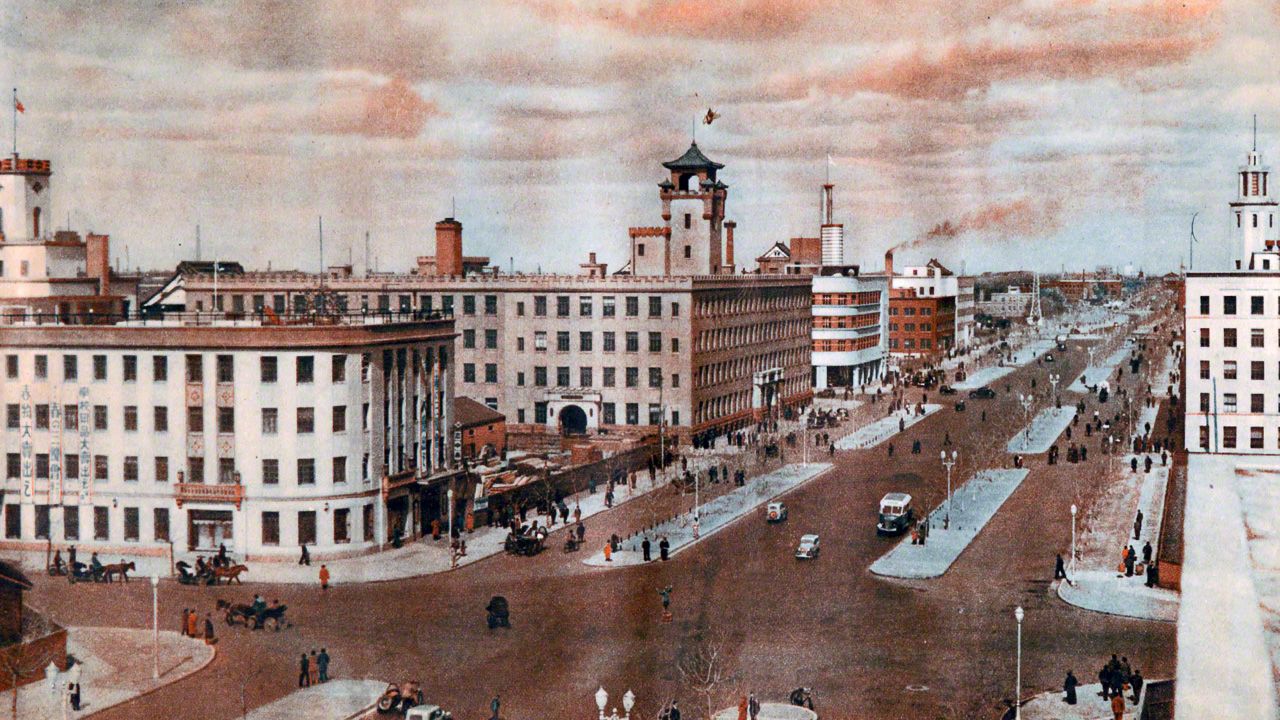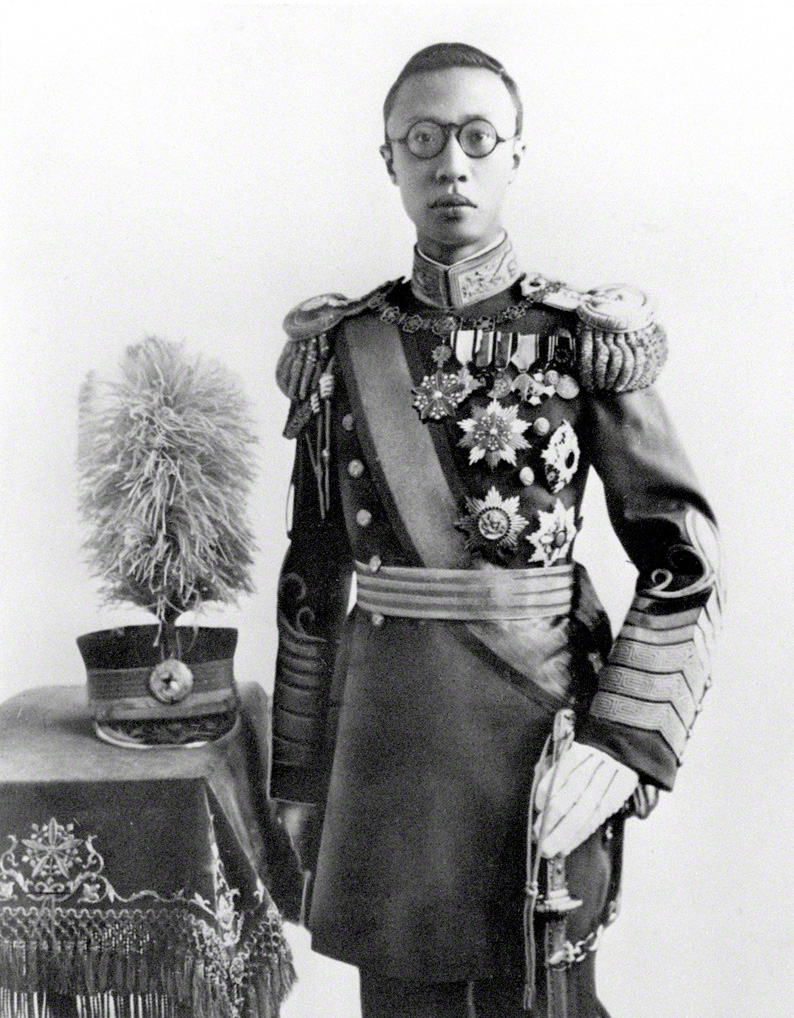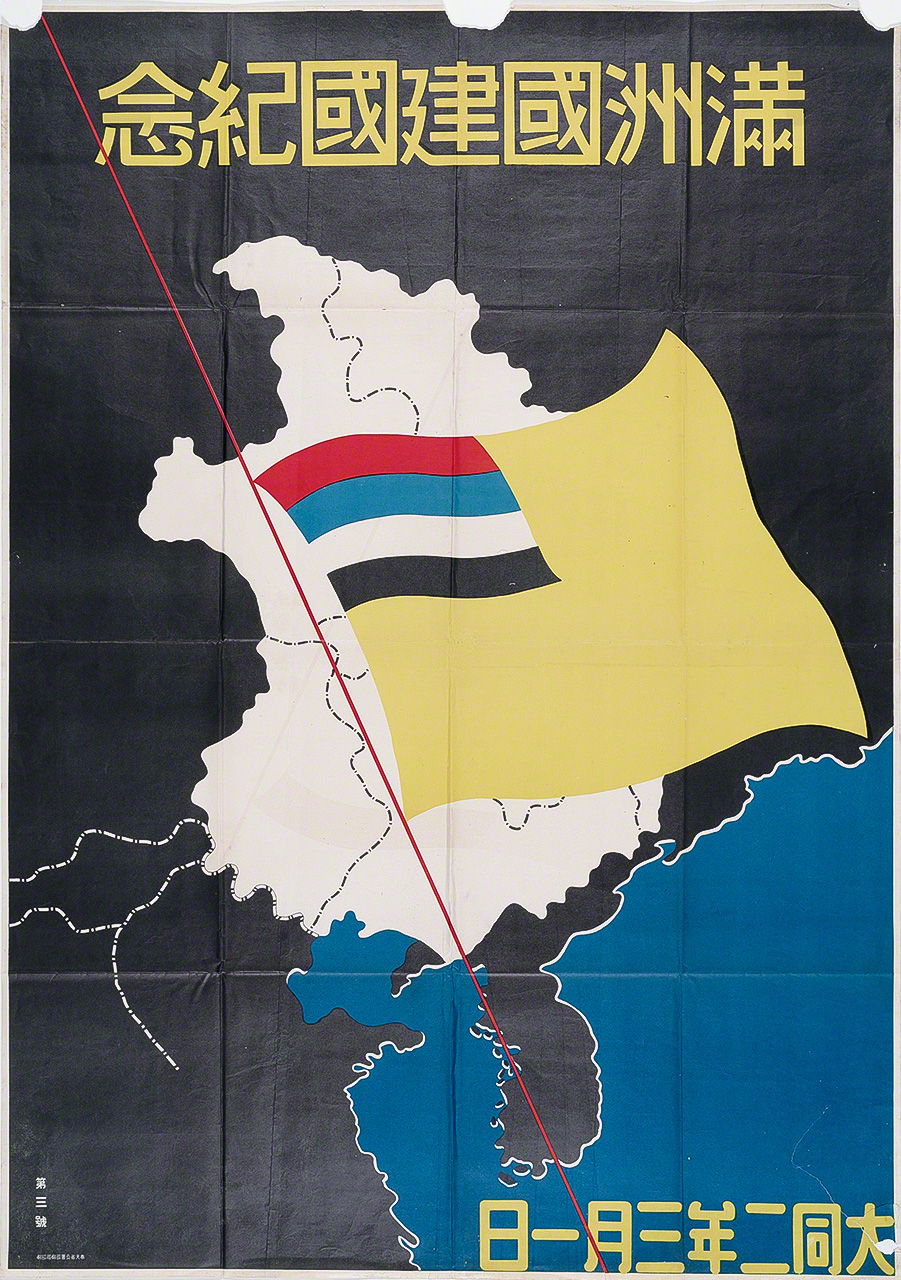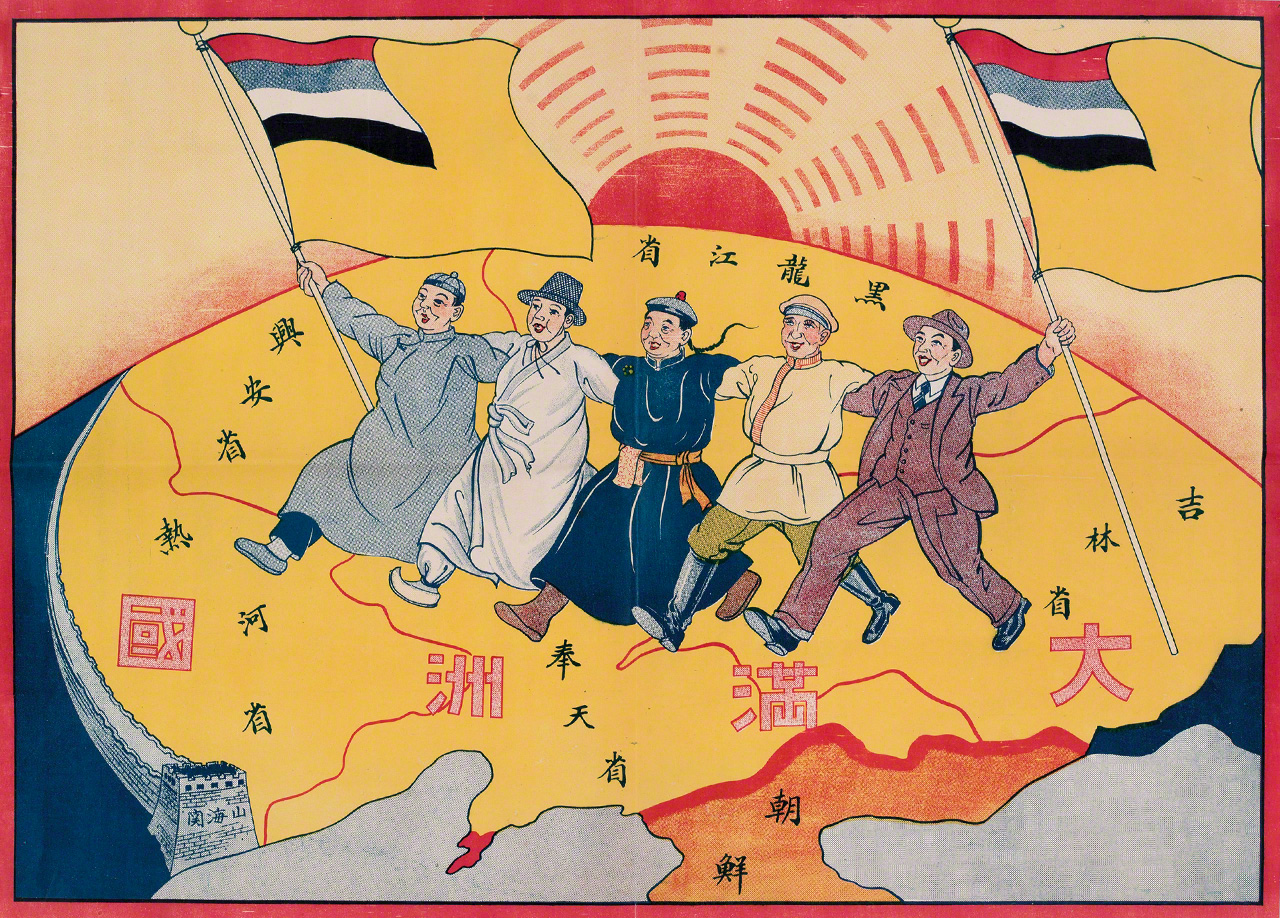
Manchukuo: Imperial Japan’s Puppet State
Politics Society Culture World History- English
- 日本語
- 简体字
- 繁體字
- Français
- Español
- العربية
- Русский
Manchukuo was a puppet state of Japan established in Manchuria in northeastern China that existed from 1932 until 1945, with Puyi (1906–67), the last emperor of the Qing dynasty, as its nominal ruler.

Puyi became the emperor of China at the age of two, and was forced to abdicate four years later, when the country became a republic in 1912. As an adult, he became the ruler of Manchukuo. (© Kyōdō)
Japan was one of the founders and a permanent member of the League of Nations from 1920, but became increasingly isolated in the 1930s, and withdrew from the organization in March 1933. Its creation of Manchukuo as part of the Greater East Asia Co-Prosperity Sphere, proclaiming the harmonious cooperation of peoples in the region, was a factor leading to the start of World War II in Asia. With Japan’s defeat in 1945, the state of Manchukuo came to an end.
The founding of the state infringed the rights of Chinese citizens, and came at the cost of many lives. At the same time, it created a civilization and culture connected to its particular circumstances. A Chinese researcher of Japanese literature who had suffered hardships in Manchukuo unearthed numerous historical sources and explored this contradictory dual nature of the state. Around 1990, a US researcher saw the country as a pioneer in promoting multiculturalism, while a survey found that Taiwan has held an annual event commemorating the Manchurian Incident. A South Korean researcher also saw considerable influence of Manchukuo on the postwar South Korean military government. While new research around the world is providing more ways of looking at the country, there is a need for a more comprehensive, cultural perspective.
A Banner of “Ethnic Harmony”
Initially, the Japanese military had not planned to create a puppet state. The Manchurian Incident took place on September 18, 1931, when young officers of Japan’s Guandong (Kwantung) Army, charged with the defense of the leased Guandong Territory, ignored the Army General Staff Office and created an explosion on the tracks of the SMR, or South Manchuria Railway. They proclaimed that this was the work of Chiang Kai-Shek’s Guomindang, and set out to occupy the region with the support of Japanese troops stationed in Korea. The incident threw into confusion the government of Prime Minister Wakatsuki Reijirō, who had followed a policy of international cooperation, and it soon fell.
Ugaki Kazushige (1868–1956), the governor-general of Korea, who had long served as Army Minister, brought the Guandong Army under control and masterminded the establishment of an independent Manchurian state through orders to the army and the cabinet. His role was not known about until I shed light on it in my 2021 book Manshūkoku: Kōsaku suru nashonarizumu (Manchukuo: Intersecting Nationalisms).
Another important movement was that of the Manchu supporters of the former Qing dynasty, who showed their support for Puyi from the time of the Manchurian Incident. They made strenuous efforts to establish ties with military politicians estranged from Zhang Xueliang (1901–2001), who held power in Manchuria. Xueliang’s warlord father Zhang Zuolin (1875–1928) had taken control of a vast area of land (more than three times greater than Japan’s current territory) enclosed by Liaodong Bay in the south and mountains on three other sides, from which he launched attacks on central China, and even sought to seize power over the larger state.
Zuolin was assassinated in a bomb explosion organized by the Guandong Army in June 1928, and Xueliang put pressure on the Japanese concession with the construction of railways and ports. However, at the end of the year, he pledged allegiance to Chiang Kai-Shek, in exchange for continued control over the northeastern Chinese provinces of Fengtian, Jilin, and Heilongjiang. Some members of Xueliang’s military did not agree with this action.
The Guandong Army timed the Manchurian Incident for when Xueliang was supporting Chiang’s army against Communist forces. Rather than fighting the Guandong Army, Chiang appealed to the League of Nations over infringement of sovereignty, while Japan called for the dispatch of a survey team.
At the end of 1931, Manchu supporters of the Qing dynasty, Han Chinese soldier politicians who defied Zhang Xueliang, and Mongol leaders began planning a new state. In March 1932, they announced the founding of Manchukuo, dividing up the major positions in its government. The Guandong Army arranged and attended a conference of the groups, but there was no mention of Puyi, or indeed who would be the head of state, in the founding announcement. Due to disputes over the political system, all that was decided was the establishment of an independent state boasting “ethnic harmony.”

A poster celebrating the first anniversary of the founding of Manchukuo. (Courtesy Nagoya City Museum, from the Kurita collection)
Expanding Authority
The Guandong Army held ceremonies for Manchukuo’s foundation and the installation of Puyi as its leader at a different time. It was a tricky balancing act, as there needed to be the appearance of a Manchukuo state by the time of the arrival of the Lytton Commission, an investigation team sent by the League of Nations. With the assistance of Japan’s Ministry of Foreign Affairs, Puyi was spirited away from the Japanese concession in Tianjin, where he was then living. At first, he had to content himself with a position as chief executive of the state, but in exchange for a promised title of emperor, in September 1932 Japan and Manchukuo concluded a protocol in which Japan recognized the state, took responsibility for its defense, and won the rights to appoint Japanese officials to the General Affairs State Council. In the form of an international treaty, this agreement effectively set Manchukuo up as a Japanese colony, and drew outrage from many countries. This led to Japan’s exit from the League of Nations in March 1933 on a path to international isolation. In March 1934, the state became the Empire of Manchukuo with Puyi as its emperor.
Japan took control of the leased Guandong Territory in the Liaodong Peninsula after the Russo-Japanese War of 1904–05. At first, the Guandong Army was just an army unit stationed in the territory that guarded land and buildings belonging to Japan’s SMR company, but the establishment of Manchukuo greatly lifted its status, provoking further independent actions. From around 1935, it was engaged in constant skirmishes as it maneuvered to try and set up pro-Japanese governments in Inner Mongolia and northern China. To the Chinese military, these must have seemed like efforts to expand the borders of Manchukuo. In July 1937, the Marco Polo Bridge Incident triggered the start of full-scale hostilities between Japan and China.
A Form of Multiculturalism
After its 1932 founding, Manchukuo maintained its national policy of “ethnic harmony.” Manchuria was the homeland of the Manchu people who ruled China during the Qing dynasty, and although other groups had long been banned from entering, there were Mongolian nomads in the Western plains and Oroqen hunters in the forest regions. Han settlers had cultivated new land from the late eighteenth century and there were also Hui Muslims, Koreans, and Russians fleeing from the Soviet Union. In areas where Russians had settled, Russian Orthodox Christianity was practiced and there were Russian-language newspapers. Polish Russians involved in the construction of Harbin also built Catholic churches and synagogues. For Poles who had lost their country during the time of the Russian Empire, Manchuria seemed like a promised land. As Manchukuo indiscriminately accepted displaced people, it was a paradise for its wealthy residents.

A leaflet promoting Manchukuo, created after its foundation in 1932. It hails the harmony of five peoples (Japanese, Mongol, Manchu, Korean, and Han Chinese), showing representatives from each arm in arm. (Courtesy Nagoya City Museum, from the Kurita collection)
The Manchus who had supported the former Qing dynasty valued Confucianism, and restored temples to Confucius, making traditional ceremonies into annual observances. They also laid the groundwork for awards for filial sons. However, Han Chinese intellectuals, steeped in modern thinking, opposed such moves. In the state of Manchukuo, the Han, an overwhelming majority across China, were known as “Manchurians” and the Chinese language “Manchurian.” Most of the state’s police officers and judges were these “Manchurians,” and administrative documents were written first in “Manchurian” with Japanese translations. Japanese elementary students learned alongside the “Manchurians,” and studied “Manchurian.” The “Manchurians” likewise studied Japanese, which gave them a clear advantage in finding jobs. This was a form of multicultural mixing.
Developing Manchukuo
The Japanese exerted control over Manchukuo through “internal guidance” (naimen shidō). High-level bureaucrats were dispatched from Japan to direct affairs in the state. Technocrats and SMR technicians who had been involved in building up Dalian into a port for international trade worked to integrate Manchukuo together with administrative systems in Guandong. SMR, owned by the Japanese state, became a major enterprise operating in numerous fields, and even involved itself in topographical surveys in Manchuria and Inner Mongolia and cultural activities like the construction and running of schools and libraries.
The Manchukuo capital of Xinjing (the name for Changchun during the existence of the state) was a modern city, even by international standards, incorporating the latest Western technologies. Planners instituted zoning, and there were extensive water and sewage systems, central heating, and gas. The road network saw the advance of technical development to meet the problems of a cold climate where roads were covered with frozen soil in winter and became muddy in spring. Work started on a dam said to be one of the biggest in the East. The unification of communications and information management by the Guandong Army was also achieved ahead of that in Japan.
The adoption of a five-year plan for industrial development beginning in April 1937 was in imitation of the Soviet Union. Kishi Nobusuke (1896–1987), who effectively headed the plan and was involved in the administration of the home islands after returning to Japan, testified to this effect. He reorganized the SMR to make its various departments into state enterprises. However, the outbreak of war between Japan and China in 1937 upset expectations of supply and demand, leading to rapid wholesale changes in the plan, as it failed to meet budget needs and secure skilled workers.
Tragic Confusion
In July 1941, Prime Minister Konoe Fumimaro proclaimed the creation of a Greater East Asia Co-Prosperity Sphere. Around the same time, a book about tigers by Nikolai Baikov—who was born in Ukraine in the Russian Empire, but lived many years in Manchuria—was a bestseller in Japanese translation. Many other books by Manchukuo writers were translated. Some people really were set on promoting “ethnic harmony.” At the start of hostilities with the United States and Britain, the Guandong Army press office head said that Manchukuo was a model for the Co-Prosperity Sphere. However, at the same time imperialistic policies were being implemented in Korea and Taiwan—the reality of the Sphere.
The history of Manchukuo shows us a tragic confusion of disregard for human rights alongside a form of multiculturalism. This kind of semiforced control can still be seen in the world today. The Russian invasion of Ukraine, which has lasted for over a year since February 2022, may be the most striking example. It is true that researchers from countries who themselves suffered have called for a reassessment of Manchukuo’s cultural history, but I believe that there should never be territorial aggression against other countries.
(Originally published in Japanese on March 29, 2023. Banner photo: A main street in the Manchukuo capital of Xinjing in 1941. Photo by Kingendai Photo Library/Aflo.)